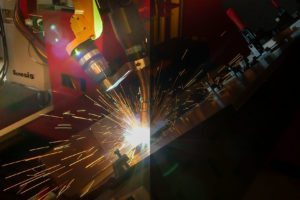Robotic welding is most effective in high-volume, repetitive applications where minimal programming and tooling changes are needed. In such scenarios, system uptime is typically very high, making it a reliable choice for large-scale production. However, not all manufacturing environments fit this model. For smaller companies, the challenge lies in determining whether robotic welding can deliver a meaningful return on investment (ROI). Unlike mass production, small batch operations often require frequent changes in setup, which can complicate automation efforts. But with recent advancements in robotic technology, even smaller manufacturers can now explore automation as a viable option. The truth is, robotic automation isn’t just for big businesses anymore. With the right tools and strategies, even small shops can achieve significant efficiency gains and long-term cost savings. If you're unsure about ROI, why even consider robotic welding? There are several compelling reasons why more small to medium-sized manufacturers are turning to automation: First, automation helps level the playing field against larger competitors. Big companies have the resources to invest in advanced systems, giving them an edge in speed, consistency, and cost control. To stay competitive, smaller shops must adopt similar technologies or risk falling behind. Second, there's a growing shortage of skilled welders. According to the U.S. Department of Labor, the industry needs to add 12,850 welders annually until 2024 just to meet demand. Robotic welding offers a solution by reducing reliance on manual labor and ensuring consistent quality without the need for constant hiring and training. While every application is unique, certain factors can significantly improve your chances of achieving ROI in small batch welding: First, you'll need a flexible robotic system with multiple axes. This allows the robot to handle a variety of part geometries and configurations, which is essential when working with different product designs in small batches. Second, an efficient offline programming system is crucial. It enables you to program the robot without interrupting production, saving time and increasing productivity. Many welders can be trained to operate these systems, while integrators can also provide pre-programmed solutions that allow robots to start working immediately upon installation. Other considerations include ease of integration, scalability, and support from an experienced system integrator. These elements ensure that your robotic welding system can grow with your business and adapt to future needs. With the right setup, robotic welding can indeed offer a strong ROI for small batch production. The key is to understand your specific needs, choose the right technology, and work with an expert who has experience in your industry. If you're interested in learning more about how robotic welding can benefit your business, explore our collection of real-world case studies. You’ll find examples that match your production environment and help you make an informed decision. mold steel,mold steel,car mold steel,auto mold steel Jiangyou ChongxinSpecial Metal Materials Co., Ltd. , https://www.zhongxindiesteel.comRobotic Welding: Can You Achieve ROI in Small Batch Production?

Why Consider Robotic Welding?
Key Factors for ROI in Small Batch Production